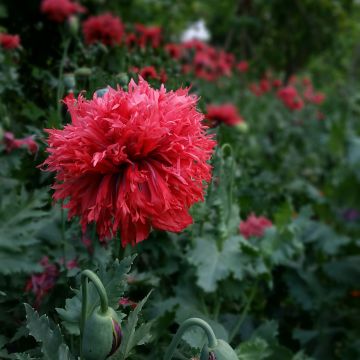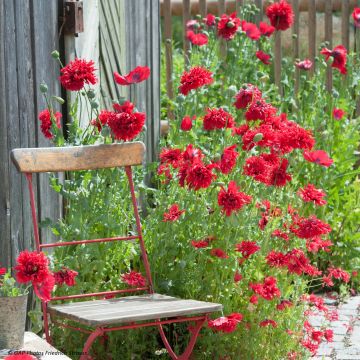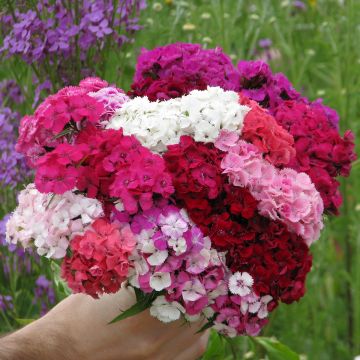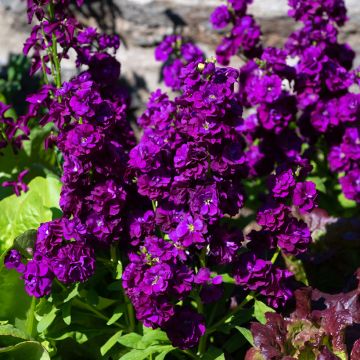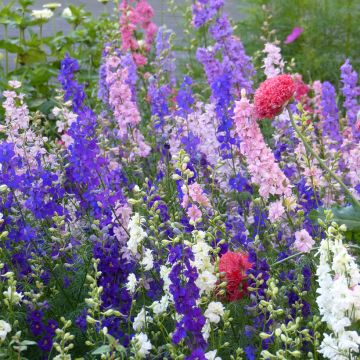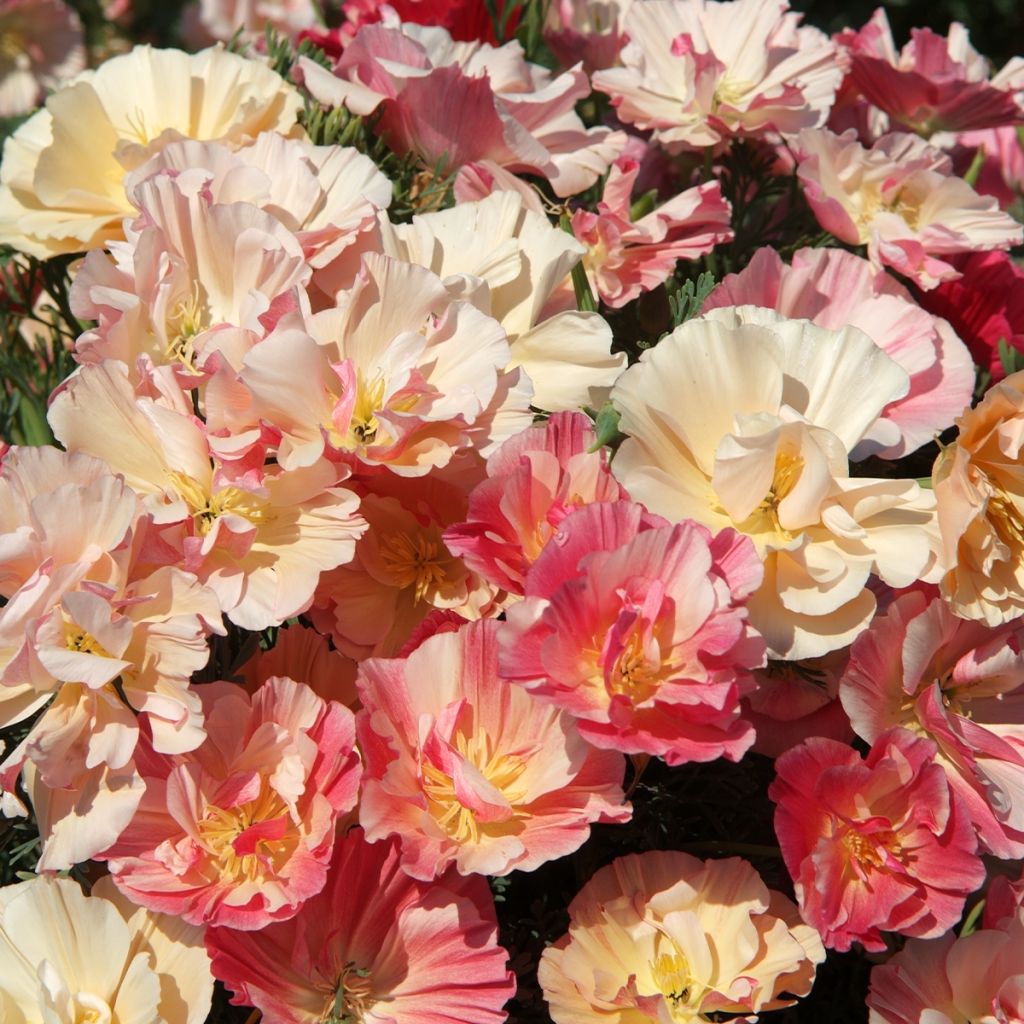

Graines de Pavot de Californie Appleblossom - Eschscholzia


Graines de Pavot de Californie Appleblossom - Eschscholzia
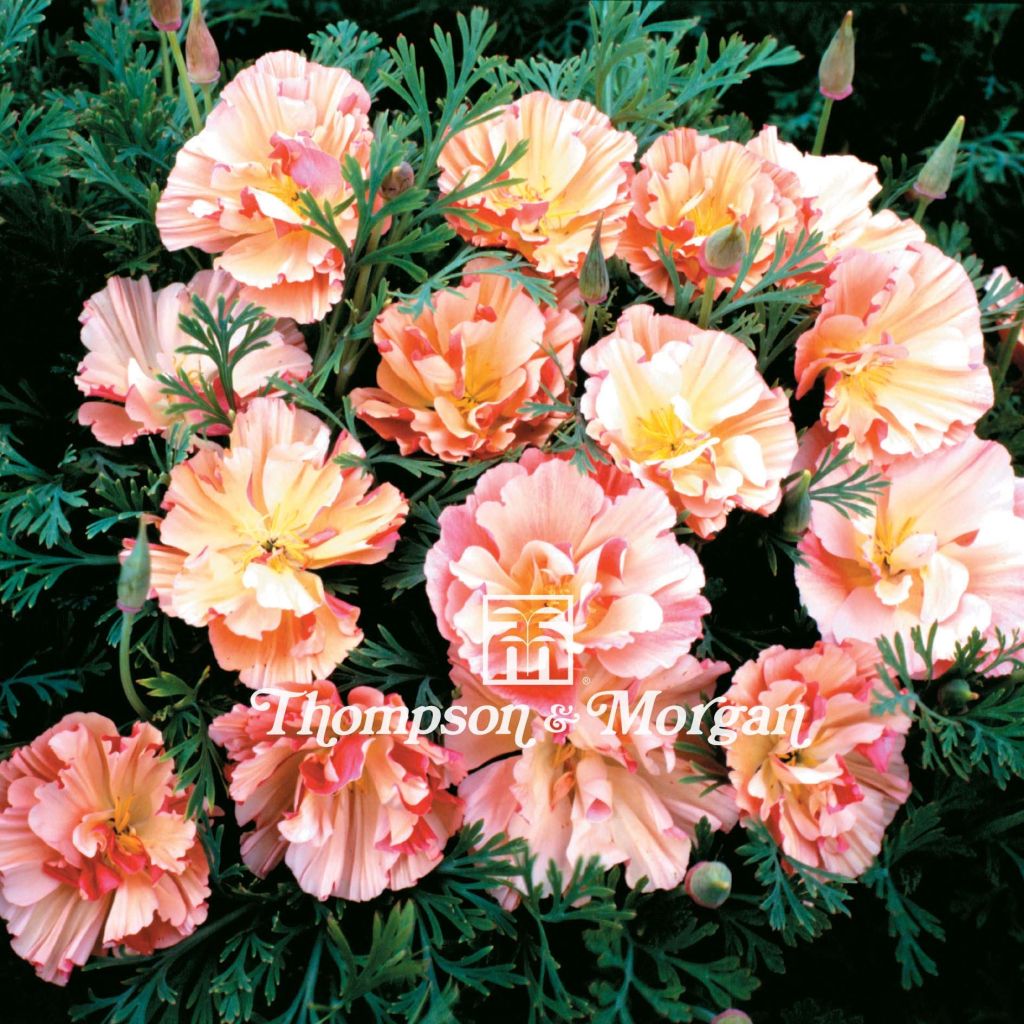

California Poppy Seeds Apple Blossom - Eschscholzia
California Poppy Seeds Apple Blossom - Eschscholzia
Eschscholzia californica Appleblossom
California Poppy
This item cannot be shipped to the selected country
Dispatch by letter from €3.90
More information
Schedule delivery date,
and select date in basket
This plant carries a 6 months recovery warranty
More information
We guarantee the quality of our plants for a full growing cycle, and will replace at our expense any plant that fails to recover under normal climatic and planting conditions.
Seed-only orders are dispatched by sealed envelope. The delivery charge for seed-only orders is €3.90.
Does this plant fit my garden?
Set up your Plantfit profile →
Description
Eschscholzia californica 'Apple Blossom' is a delightful variety of California poppy baring double flowers in swirling corollas, variegated in different shades ranging from deep pink to peach and cream. The flowers bloom throughout the summer, above finely cut foliage of bluish-green colour. Ideal in flower beds, rock gardens, and borders, these annual plants self-seed spontaneously and are easy to cultivate in any well-drained soil, even poor, but in the sun.
California Poppy 'Apple Blossom' is derived from Eschscholzia californica, an annual plant with a short lifespan originating from California and the southwestern United States. This plant with a taproot quickly forms a clump of foliage about 25cm (9.8in) in all directions. Its leaves are pinnate, finely cut, with a color that hesitates between bluish-green and attractive grey-green, contrasting with that of the flowers. The flowering takes place from spring to summer, depending on the sowing date. It reveals, in the midst of its foliage, silky-textured flowers measuring 5cm (2in) in diameter, composed of multiple randomly pleated and undulating petals splashed with different cream, peach, salmon pink, delicate pink, and deep pink colours. They only fully open if the sun is generous. The flowering is melliferous and nectariferous. It is followed by the formation of long slender capsules measuring 7 to 8cm (3.1in) in length, with a glaucous green colour, containing tiny seeds that self-seed spontaneously. Plants resulting from sowing may not necessarily be identical to the mother plant, especially if other varieties of California poppies are grown in the garden.
California poppies are a boon for dry gardens, rock gardens, degraded soils, and coastal gardens. They can be sown in perennial beds, natural areas of the garden, or even in pots. They are perfect plants for low-maintenance or weekend gardens. Their colors blend wonderfully with light blues, white, and mauves. They are beautiful but ephemeral in bouquets.
Report an error about the product description
California Poppy Seeds Apple Blossom - Eschscholzia in pictures


Flowering
Foliage
Plant habit
Botanical data
Eschscholzia
californica
Appleblossom
Papaveraceae
California Poppy
Cultivar or hybrid
Other Poppy seeds
Planting and care
Sow the seeds of Eschscholzia californica directly in place, from March to May or in September, the seeds will overwinter without damage. The sowings done in autumn will bloom in spring. Choose a very sunny spot, in all poor and well-drained soils, well loosened. Bury the seeds to a depth of 1cm (0.4in), in small holes spaced 15cm (5.9in) apart. Cover the seeds so that they do not receive any light. Water regularly, keeping the soil moist, especially during dry periods. Germination usually takes 14 to 21 days. When the seedlings are large enough to handle, space the plants 15cm (5.9in) apart. You can also sow Californian poppies indoors from February to March at a temperature of 15-21°C.
When the seedlings are large enough to handle, transplant them into pots and grow them in a cool place until the plants are large enough to be planted outside.
Cultivation:
These plants require full sun and a perfectly drained, sandy or gravelly soil. The soil they are planted in must be poor. In too rich soil, the plant becomes gigantic, it becomes huge and eventually topples over. In the garden, it is content with the most ungrateful situations, as long as it is exposed to the sun's rays: gravel, rockery filled with stones, dry slope. It is perfectly possible to grow them in pots and containers. Due to their taproot, these poppies do not like to be moved, which is why it is preferable to sow them in place.
Sowing period
Intended location
-
, onOrder confirmed
Reply from on Promesse de fleurs
Flower seeds
Haven't found what you were looking for?
Hardiness is the lowest winter temperature a plant can endure without suffering serious damage or even dying. However, hardiness is affected by location (a sheltered area, such as a patio), protection (winter cover) and soil type (hardiness is improved by well-drained soil).

Photo Sharing Terms & Conditions
In order to encourage gardeners to interact and share their experiences, Promesse de fleurs offers various media enabling content to be uploaded onto its Site - in particular via the ‘Photo sharing’ module.
The User agrees to refrain from:
- Posting any content that is illegal, prejudicial, insulting, racist, inciteful to hatred, revisionist, contrary to public decency, that infringes on privacy or on the privacy rights of third parties, in particular the publicity rights of persons and goods, intellectual property rights, or the right to privacy.
- Submitting content on behalf of a third party;
- Impersonate the identity of a third party and/or publish any personal information about a third party;
In general, the User undertakes to refrain from any unethical behaviour.
All Content (in particular text, comments, files, images, photos, videos, creative works, etc.), which may be subject to property or intellectual property rights, image or other private rights, shall remain the property of the User, subject to the limited rights granted by the terms of the licence granted by Promesse de fleurs as stated below. Users are at liberty to publish or not to publish such Content on the Site, notably via the ‘Photo Sharing’ facility, and accept that this Content shall be made public and freely accessible, notably on the Internet.
Users further acknowledge, undertake to have ,and guarantee that they hold all necessary rights and permissions to publish such material on the Site, in particular with regard to the legislation in force pertaining to any privacy, property, intellectual property, image, or contractual rights, or rights of any other nature. By publishing such Content on the Site, Users acknowledge accepting full liability as publishers of the Content within the meaning of the law, and grant Promesse de fleurs, free of charge, an inclusive, worldwide licence for the said Content for the entire duration of its publication, including all reproduction, representation, up/downloading, displaying, performing, transmission, and storage rights.
Users also grant permission for their name to be linked to the Content and accept that this link may not always be made available.
By engaging in posting material, Users consent to their Content becoming automatically accessible on the Internet, in particular on other sites and/or blogs and/or web pages of the Promesse de fleurs site, including in particular social pages and the Promesse de fleurs catalogue.
Users may secure the removal of entrusted content free of charge by issuing a simple request via our contact form.
The flowering period indicated on our website applies to countries and regions located in USDA zone 8 (France, the United Kingdom, Ireland, the Netherlands, etc.)
It will vary according to where you live:
- In zones 9 to 10 (Italy, Spain, Greece, etc.), flowering will occur about 2 to 4 weeks earlier.
- In zones 6 to 7 (Germany, Poland, Slovenia, and lower mountainous regions), flowering will be delayed by 2 to 3 weeks.
- In zone 5 (Central Europe, Scandinavia), blooming will be delayed by 3 to 5 weeks.
In temperate climates, pruning of spring-flowering shrubs (forsythia, spireas, etc.) should be done just after flowering.
Pruning of summer-flowering shrubs (Indian Lilac, Perovskia, etc.) can be done in winter or spring.
In cold regions as well as with frost-sensitive plants, avoid pruning too early when severe frosts may still occur.
The planting period indicated on our website applies to countries and regions located in USDA zone 8 (France, United Kingdom, Ireland, Netherlands).
It will vary according to where you live:
- In Mediterranean zones (Marseille, Madrid, Milan, etc.), autumn and winter are the best planting periods.
- In continental zones (Strasbourg, Munich, Vienna, etc.), delay planting by 2 to 3 weeks in spring and bring it forward by 2 to 4 weeks in autumn.
- In mountainous regions (the Alps, Pyrenees, Carpathians, etc.), it is best to plant in late spring (May-June) or late summer (August-September).
The harvesting period indicated on our website applies to countries and regions in USDA zone 8 (France, England, Ireland, the Netherlands).
In colder areas (Scandinavia, Poland, Austria...) fruit and vegetable harvests are likely to be delayed by 3-4 weeks.
In warmer areas (Italy, Spain, Greece, etc.), harvesting will probably take place earlier, depending on weather conditions.
The sowing periods indicated on our website apply to countries and regions within USDA Zone 8 (France, UK, Ireland, Netherlands).
In colder areas (Scandinavia, Poland, Austria...), delay any outdoor sowing by 3-4 weeks, or sow under glass.
In warmer climes (Italy, Spain, Greece, etc.), bring outdoor sowing forward by a few weeks.








































